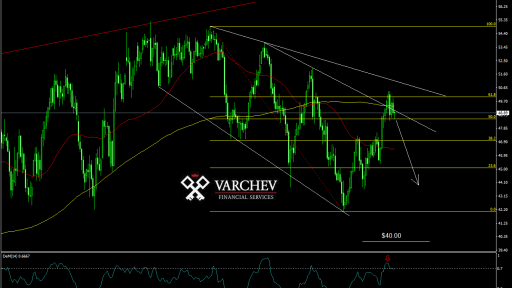- Home
- >
- Commodities Daily Forecasts
- >
- Here’s Why Oil Will Return To $40

Here's Why Oil Will Return To $40

Here we will look at the fundamental and technical reasons why oil will again reach $ 40 a barrel.
Fundamental part
After Nigeria and Libya for a short period of time were supporters of the OPEC agreement to cut production, the two countries are now exempted from this agreement and are aiming for a full recovery of their production. This is happening against the backdrop of the country's great unrest and the need for additional means to tackle the problem.
On the graph below, we can see how fast the production in both countries is increasing:
With the oil price plummeting nearly 70% in 2014, oil companies have to develop more cost-effective extraction technologies, and this has taught them to earn even at low prices of black gold.
Why then did the oil return to the area just under $50 a barrel?
The main factor is the disruption of supplies from Canada, Nigeria and Iraq and OPEC's promise to deepen its shortened mining program. On the US side, stocks grew slightly, and Baker Huges's number of drillings has fallen twice over the last four weeks. Technically, many sellers on the market have closed their short positions, which further supports the price.
That's why it will not rise any more.
As the supply disruption is over, manufacturers will again flood the market. This includes not only OPEC members but also many other oil producing countries. At the current level of production, OPEC can not compensate for the world yield, and it will not be possible after the expected increase. The current depletion of warehouses is a seasonal phenomenon caused by increased demand during the summer season.
Technically, the trend should continue
The price was moving in a descending canal that began on February 23 and forms an ever-lower bottom and lower peaks. Therefore, we think that the downward movement will remain. The price is currently in a 200SMA resistance area, 61.8% Fibonacci correction and diagonal resistance. Price Action: Swallowing bar and two tits above - a strong negative signal. Dem (14) rotates from an over-purchase area - a signal for a new downward movement.
Source: Bloomberg Pro Terminal
Jr Trader Petar Milanov
 Varchev Traders
Varchev Traders Read more:
If you think, we can improve that section,
please comment. Your oppinion is imortant for us.












